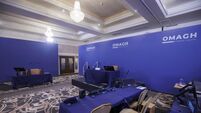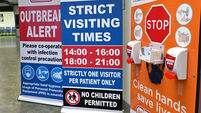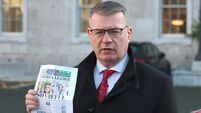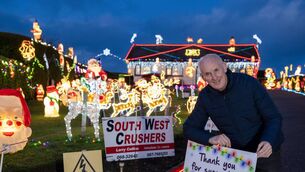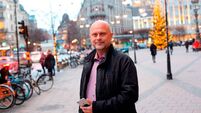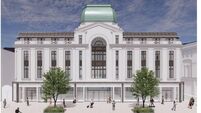Stardust inquest hears chains were left on doors to make them appear locked

The inquests into the 48 people who died in the north Dublin venue following a fire in the early hours of Valentine’s Day 1981 heard evidence on Wednesday from a doorman who was off duty and in the Stardust as a patron on the night. File picture: Sasko Lazarov / RollingNews.ie
Chains would be left on exit doors on disco nights at the Stardust nightclub to “give the impression” that they were locked, fresh inquests have heard.
Furthermore, only the light of a bicycle helped some staff members to identify the right key to help them escape the venue after the lights went out on the night of the fire, the jury was told.
The inquests into the 48 people who died in the north Dublin venue following a fire in the early hours of Valentine’s Day 1981 heard evidence on Wednesday from a doorman who was off duty and in the Stardust as a patron on the night.
Francis Kenny, who had recently quit his regular electrician job to become a trainee with the fire brigade, also worked part-time as a doorman in the Stardust.
He told the inquests that members of staff would be assigned different duties on different nights. He said on two occasions during his six-week stint at the venue he was given the task of unlocking two exit doors that would have been accessible to patrons on the night.
Asked by counsel for the coroner, Simon Mills SC, when the doors would have been unlocked, Mr Kenny said this would happen at the start of the evening. He explained that the padlock would be opened and the chain and padlock draped over the bars of one of the double doors.
“If you look at it from a distance it would give the impression that it’s locked,” he said. The area would also be manned by one of the doormen, and this was done to prevent patrons from letting their friends in the side without paying, he said.
In his original statement to gardaí in the aftermath of the fire, Mr Kenny recounted an incident several weeks prior where he was told Stardust owner Eamon Butterly had seen patrons in the venue who he believed had been refused admission.
He said Mr Butterly then checked the number of people who had paid in against a rough estimate of how many were there, and surmised that around 150-200 people were in the hall without paying. Mr Kenny said he was told by a colleague that Mr Butterly “became annoyed” and said doormen “weren’t doing their jobs and something had to be done about it”.
Mr Mills put it to Mr Kenny that it has been suggested that Mr Butterly may have responded by taking the step of locking doors that may previously have been unlocked. Mr Kenny said he did not witness such practices and on the nights he was tasked with unlocking the doors, he did so at the beginning of the evening.
Mr Kenny left the Stardust on the night of the fire with his girlfriend at around 1.20am, prior to the fire being spotted and chaos descending.
He added that he was told by a manager of the adjacent Silver Swan pub on the day after the fire that Mr Butterly had said staff shouldn’t speak to the media until they had spoken to his solicitors. Mr Kenny said he was not told this by Mr Butterly directly.
His evidence continues on Thursday.
Earlier, then-16-year-old lounge boy Edward McNamee told the inquests he had seen flames on the back of a chair in the west alcove of the venue before fleeing. He described using the light of his bicycle in a corridor to help a colleague identify the right keys to open a door to exit the building.







